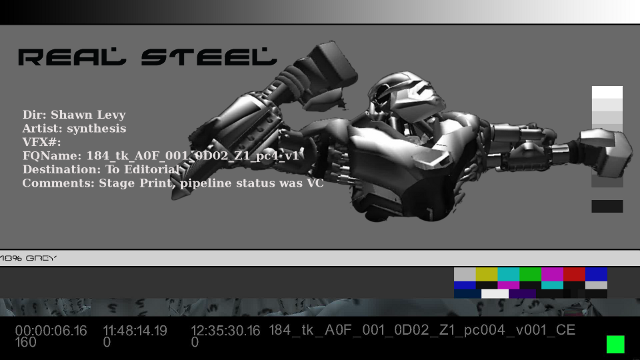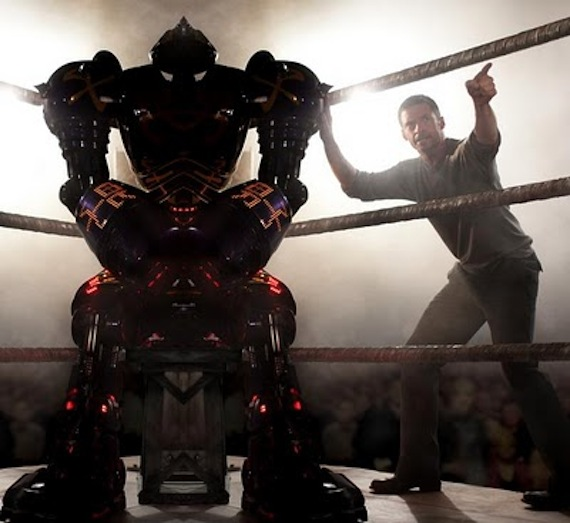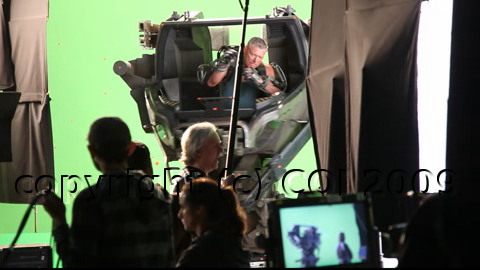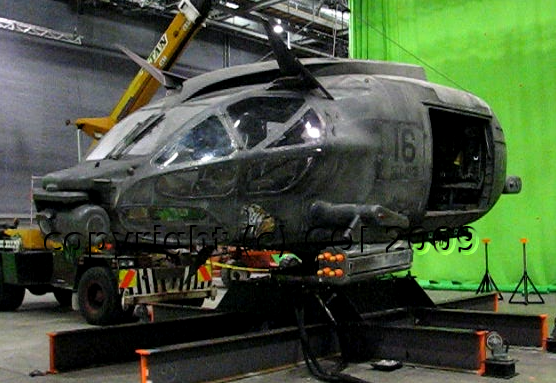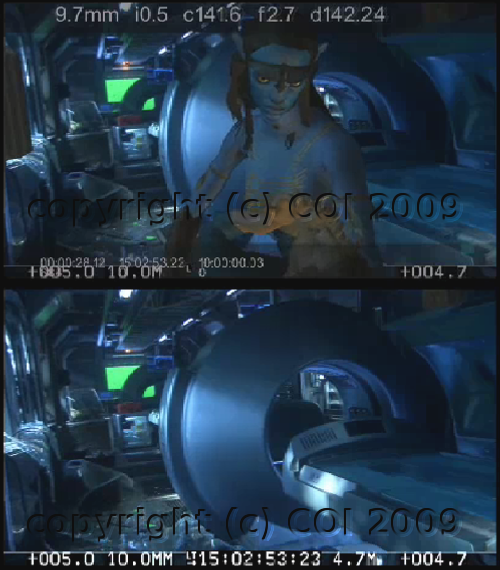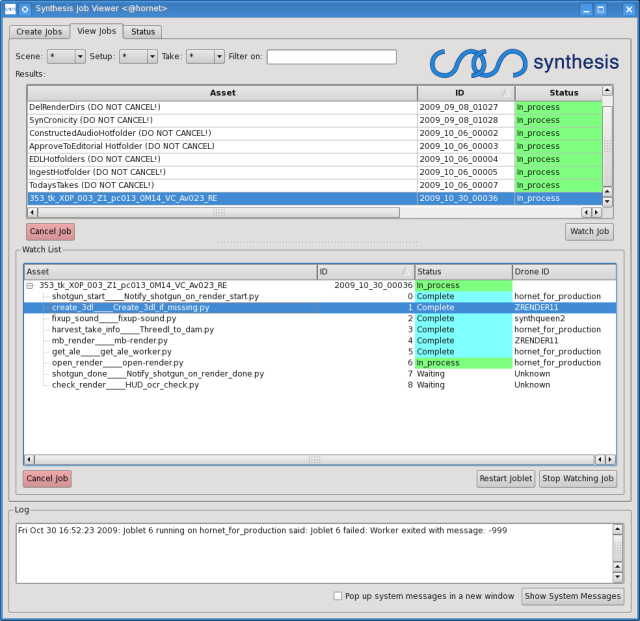Los Angeles, Calif. Oct 18 2023
At a ceremony in the Saban Media Center at the Television Academy in North Hollywood, the Academy presented Concept Overdrive an Engineering, Science and Technology Emmy award for outstanding achievement in broadcast. This event was part of the 75th annual Primetime Emmy Awards.

Over 1400 broadcasts have featured Concept Overdrive technology in the last two decades. The software and hardware provides a toolkit for problem solving on-set, prototyping new products, and connecting the real and virtual-worlds for complex special effects, including Augmented Reality (AR). A tool for practical effects and Virtual Production, the Overdrive motion system has been used in seven different departments, from Stunts to animatronics to virtual-camera.

According to Emmys.com, the award is "Presented to an individual, company or organization for developments in engineering, science and technology that are either so extensive an improvement on existing methods or so innovative in nature that they materially affect the production, recording, transmission or reception of television and thereby have elevated the storytelling process."
"At this point its safe to say that if you've seen TV, you've seen Overdrive." says Concept Overdrive President and founder Steve Rosenbluth, "Thanks to the Television Academy for this great honor."
Concept Overdrive Inc. celebrates its 20th anniversary in 2024, and recently released Overdrive 3.5, which runs on 64 bit OSes and brings significant advances to the acclaimed motion control system.
Burbank, California. May 24 2022
President of Concept Overdrive, Steve Rosenbluth, delivered a keynote address for the Xenomai Worldwide Meetup, held by Intel PRC. The Real-time architecture of the Overdrive™ motion system was featured. Concurrently in May, COI released Overdrive 3.5.
The necessity of real-time computing in Film, Television and related industries was discussed in this 45 minute presentation, including case studies of motion control and motion streaming for Virtual Production.

To an online audience of thousands, Steve explained how Motion Picture and Broadcast Television utilize Overdrive in seven distinct departments - for the software's extensive capabilities and safety features. From Animatronics to Camera to Stunts, Overdrive is reliable because of its real-time architecture.
In addition to being used in nearly one hundred motion pictures, hundreds of TV commercials, and 12 years of flying cameras over NFL Football games, Overdrive has been used to control Virtual Reality experience flight simulators, and more.

"Overdrive is still the only system which fully bridges the gap between the real and virtual worlds." company founder Steve Rosenbluth says, "When creative techniques are needed, professionals in the industry choose Overdrive."

Concept Overdrive Inc. released Overdrive 3.5 in May 2022, which runs on 64 bit OSes and boasts significant advances to the acclaimed motion control system.
Hollywood, Calif. Feb 24, 2019
The film 'First Man' utilized creative effects to reach the moon, including the Overdrive™ motion control system. On the heels of the project, COI releases Overdrive 3.0.
Damien Chazelle's 'First Man' received this years Oscar® for Visual Effects, largely for its difficult-to-achieve in-camera effects and traditional techniques. The Overdrive motion control system was utilized extensively in the shooting of the film by the Special Effects crew. Overdrive literally gave the film its rugged feel - shaking actors, spacecraft and crew alike.

During the making of the 'First Man', Overdrive was used to control several six-axis hydraulic motion bases which carried aircraft, spacecraft, and crew. Safety was paramount with personnel on the machines all day. Utilizing its unique "reverse-solve", Overdrive was able to calculate the precise position of the motion base in 3D space, and even stream that live data into the video wall system which was essential to the film.
Overdrive controlled most of the gauges of the air and spacecraft cockpits, which were essential to the storytelling during tense sequences.
Overdrive was additionally used to control the motion of the multi-axis gyro trainer gimbal which spun Astronauts through the air in the film. This effect utilized large electro-mechanical servo motors.

"Overdrive is the only system which can do all this," Concept Overdrive President Steve Rosenbluth says, "When creative techniques are needed, Overdrive always delivers. We're proud to still be pushing the envelope after all this time in the industry."

Concept Overdrive Inc. releases Overdrive 3.0 on March 1, 2019, with significant advances to the Academy Award winning motion control system.
"The Jungle Book" and "Rogue One"
Beverly Hills, Feb 11 2017
The Academy of Motion Picture arts and Sciences awarded the Overdrive™ motion system a Science and Engineering Award (2016) at ceremonies this past weekend. Concept Overdrive is additionally proud to announce its role in recent features "The Jungle Book" and "Rogue One", which topped holiday box office charts this season and are both contenders in this years Oscars®.
Overdrive™ is a computerized system which gives filmmakers a toolkit for problem solving on-set, helping connect the real-world and virtual-world during complex special effects.

On "The Jungle Book", the process of Simul-cam was performed utilizing two Overdrive™ systems to move a robotic Baloo, Bison, and Elephant atop a six-axis motion base. This process moved Mowgli's body in a realistic manner. Motion and synchronization data were streamed between the real world machine and the virtual world of computer graphics on a motion network. Overdrive™ actually solved the muscular position of the creatures, on-the -fly, from visual effects animations. The process allowed the director of photography to frame the shot and get what he needed in-camera, when visualization would have been otherwise impossible.
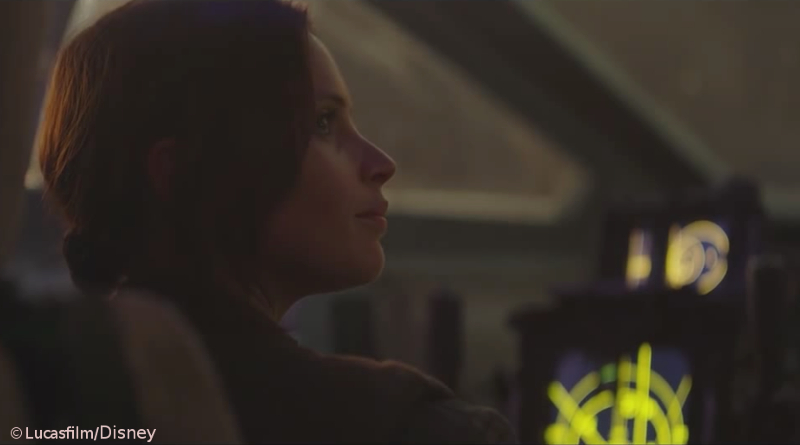
On "Rogue One: A Star Wars Story" Overdrive™ controlled the movements of the hero U-wing® ship of the film which transports the protagonists into battle, while numerous X-wings® and TIE fighters® also performed realistic flying maneuvers under Overdrive™ control. Overdrive™ additionally prototyped a streaming network between giant spaceship gimbals and motion graphics.
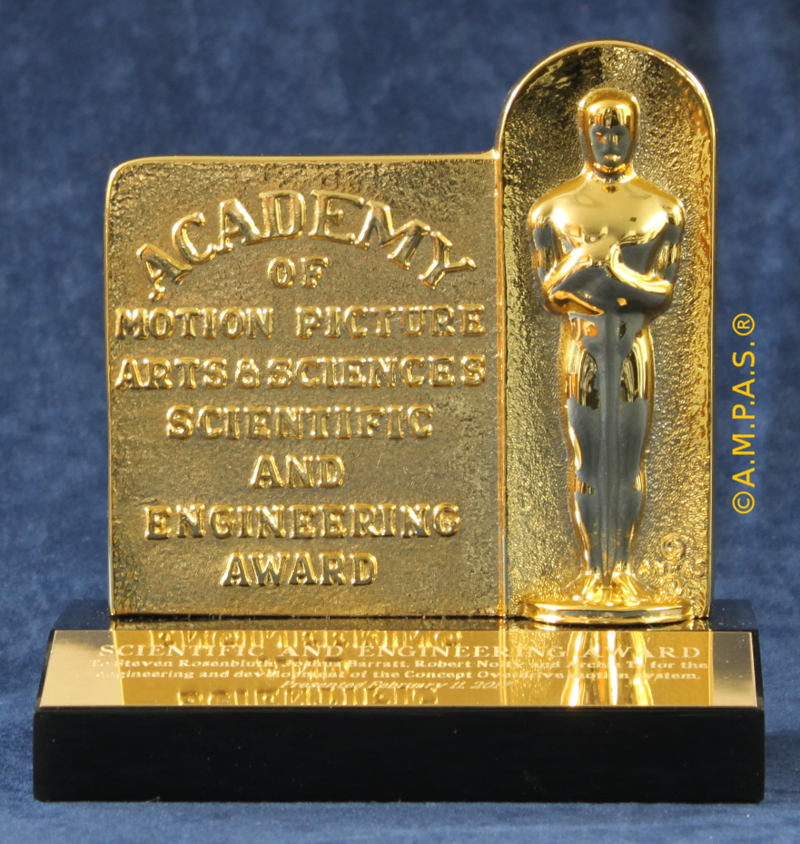
According to Oscars.org, "The Scientific and Engineering Award is given for achievements that produce a definite influence on the advancement of the motion picture industry." An award goes "To Steven Rosenbluth, Joshua Barratt, Robert Nolty and Archie Te for the engineering and development of the Concept Overdrive motion control system. This user-friendly hardware and software system creates and controls complex interactions of real and virtual motion in hard real-time, while safely adapting to the needs of on-set filmmakers. "
"Ten of the twenty contenders for Best Visual Effects in this years Oscars® utilized Overdrive™ during production", says Concept Overdrive President Steve Rosenbluth, "Overdrive™ technology has been used on 70 motion pictures in the last two decades, many in the last year - due in no small part to our partnership with European distributor Moco-FX, Ltd. We're thrilled that the industry has recognized us in this way."
* Update February 26 2017: "The Jungle Book" received the 'Best Visual Effects' award at The Oscars® this year.
* Update March 9 2017: "Godzilla: Resurgence" received 'Best Picture' and 'Best Cinematography' at The Japan Academy Prize awards. The film utilized an Overdrive virtual camera for a major portion of the pre-vis shots, and was released in the US as "Shin Godzilla".





